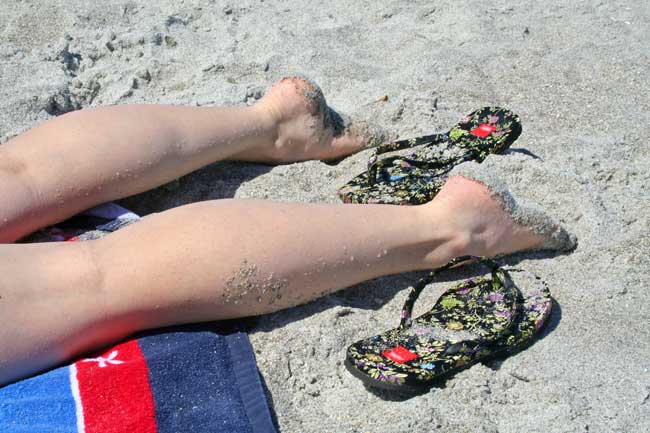Light Shed on New Sunscreen Technologies

Baby oil is out. High-tech sunscreen is in. Now that the summer high-season has arrived, some new skin-protection technologies are available to smear on your body. Wash-on sunscreen. Anti-oxidant sunscreen. Mexoryl. Are they worthwhile? Do they prevent skin cancer and wrinkles? Unfortunately, many sunscreens don't perform well and some make misleading claims. Others are used improperly by consumers and can even do more harm than good. At the very least, one doctors says, many high-tech products now coming to market are an improvement over the delusion that tanning is harmless. "It is refreshing for me as a dermatologist to see that technology is attempting to progress in this direction," said Dr. Andrea Cambio, who has a skin-care practice in Cape Coral, Florida. Broad-spectrum approach More than 1 million new cases of skin cancer are diagnosed each year, according to the American Academy of Dermatology, which calls skin cancer an unrecognized epidemic. A bit more than 10 percent of these are melanoma, which kills some 8,000 U.S. residents a year. The latest sunscreen tech trend is protection from UVA, the deeper-penetrating aging rays. They may cause skin cancer less directly than UVB, the burning rays known for many years to cause cancer-causing DNA mutations, but it's smart to go for dual or "broad-spectrum" coverage, dermatologists now say. UVA rays break down collagen in the skin and harm its elasticity, and can lead in some cases to DNA mutations and skin cancer. Look for "mexoryl" as one of the active ingredients to get both UVA and UVB protection, Cambio said. Wash your face, block the sun Lots of people hate to apply sunscreen. An option is products including "Wash On" sunscreen, a technology that encapsulates active sunscreen ingredients into micron-sized particles. You can wash with products that include it, such as Freeze 24/7 Ice Shield, and it delivers SPF 15 protection. A positive charge on the particles makes them attracted to negatively charged skin and hair. The active ingredients are then "delivered" to the skin throughout the day, even after rinsing off and patting dry, said Dave Compton, president of Aquea Scientific, which makes Wash On. The rub is in the rub. You must massage it onto your skin for 1 to 2 minutes before rinsing to get the full SPF 15 effect, Compton said. Cambio said, "Compliance could be a problem for some." Wash On products are designed for protection from incidental sun exposure, the kind you get while doing errands or walking from the car to a building. Both incidental exposure and intentional tanning play a role in the development of skin cancer, Cambio said. Compton agreed. "This is not a beach product," he told LiveScience. Wear sunscreen, hats and covering clothes for that. Misleading sunscreen claims More than 80 percent of sunscreens provide inadequate protection from the sun's harmful rays or contain ingredients with safety concerns, according to a recent analysis by the Environmental Working Group of 785 sunscreens of SPF 15 or higher.
Some sunscreen chemicals break down when exposed to sunlight and must be formulated with stabilizing chemicals, said Jane Houlihan of the EWG. Others penetrate the skin and get into the bloodstream, posing health problems. "The SPF rating on the product is helpful, but it is only part of what a consumer needs to know," Houlihan said in a prepared statement. "Our rating system includes critical information on UVA protection, how stable the product is in the sun and potential health hazards of the product's ingredients." The product that rose to the top in terms of safety and efficacy was UV Natural, which includes anti-aging ingredients such as anti-oxidants, compounds that fight environmental stressors, moisturizer and vitamin E to assist with skin reconstruction. Learn more about the EWG's sunscreen findings and recommendations at http://www.ewg.org. The bottom line is to read up on sunscreen, buy it and use it. "The best sunscreen (SPF of 30 or more and broad-spectrum) is the one you like to apply, and re-apply!" said Cambio.
- You and the Sun: 10 Burning Questions
- Images: Sunrise and Sunsets
- Top 10 Mysterious Diseases
Get the world’s most fascinating discoveries delivered straight to your inbox.
Robin Lloyd was a senior editor at Space.com and Live Science from 2007 to 2009. She holds a B.A. degree in sociology from Smith College and a Ph.D. and M.A. degree in sociology from the University of California at Santa Barbara. She is currently a freelance science writer based in New York City and a contributing editor at Scientific American, as well as an adjunct professor at New York University's Science, Health and Environmental Reporting Program.



